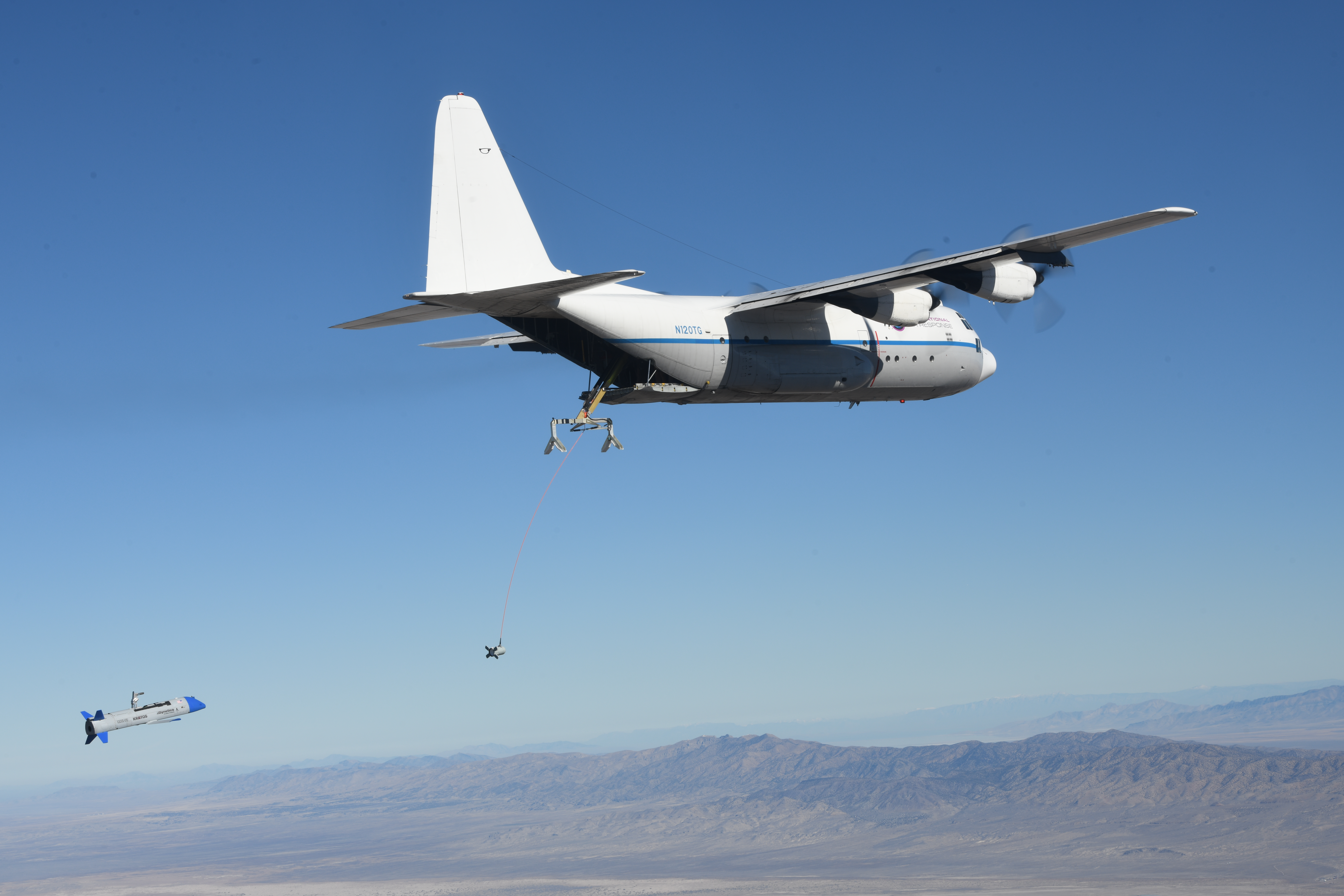The Defense Advanced Research Projects Agency crashed one of its four remaining Gremlins air-launched drones during a flight test in October but not without demonstrating some of the autonomous swarming program’s key objectives.
In tests, the X-61 Gremlins Air Vehicles, or GAVs, launch from the wing of a C-130. October’s test at the Army’s Dugway Proving Ground, Utah, both “successfully validated all autonomous formation flying positions and safety features” and “ultimately demonstrated airborne recovery to a C-130,” according to a Nov. 5 DARPA news release. Dynetics is the prime contractor on the program, and Kratos Defense builds the X-61s.
A video posted to YouTube shows the recovery. It begins with an X-61 in flight. A mechanical arm and a tether with a node on the end, described by the program as a bullet, extend from the back of a C-130. The X-61 connects with the bullet then the vehicle’s wings swivel 90 degrees until they’re stowed parallel with the main body. Next the X-61 is reeled in by the tether until it’s secured in the grip of the mechanical arm, which hauls it the rest of the way inside the C-130.
Lt. Col. Paul Calhoun, the Gremlins program manager in DARPA’s Tactical Technology Office, said in the release that the recovery operation “demonstrates the feasibility of safe, reliable airborne recovery” and “was the culmination of years of hard work.”
In addition to the autonomous formations and the recovery performed during the course of four flights of single X-61s, DARPA demonstrated that it could refurbish an X-61 after a flight and have it flying again within 24 hours. Plus, “many hours of data were collected over four flights including air vehicle performance, aerodynamic interactions between the recovery bullet and the GAV, and contact dynamics for airborne retrieval,” according to the release.
Intended to collaborate as a swarm, recoverable air-launched autonomous vehicles promise to “dramatically expand” the distances at which drones can be deployed and their potential uses, DARPA says.
The first airborne Gremlins test in January 2021 demonstrated some fundamental aspects such as data links and the vehicles’ ability to transition to powered flight. An X-61 also crashed in that test after a parachute didn’t deploy, but the parachute was only meant for the test.
A DARPA spokesperson confirmed that after the second crash in October, from an electrical system failure, the agency now has three working X-61s and those will be enough to prove, mathematically, the ultimate goal of flying and recovering four X-61s in under 30 minutes.
